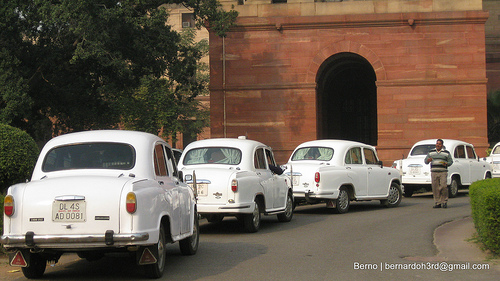Published on
Yes, No, Maybe? The Ever-Impending Opening-Up Of India’s Higher Education Sector

Some of us have gained a few more pounds and have more gray hair, if not lost some, since the time the Indian government announced its intention to open up the country’s higher education sector to international universities. A September 2006 headline in The Economic Times read: “Leading Foreign Institutes May Soon Be Here”. Another Indian newspaper, The Times of India, in anticipation of the impending opening ran this headline in July of 2007: “No Free Ride for Foreign Universities in India”. A higher education reform bill has been winding its way through the Indian parliament since at least 2007 but we are all still waiting for the passage of the law and the go-ahead to enter one of the largest and potentially most rewarding higher education markets in the world.
In March 2010, the Indian cabinet approved a measure to allow foreign universities to establish branch campuses and award degrees in the country. The decision seemed to have brought the long and arduous process of opening up to a conclusion but some members of the parliament raised objections to the plan and it did not pass. More recently, at the January 2012 meeting of the international education group Global Associates in Washington, DC, a representative of the Indian Embassy expressed optimism that the reform law will soon become a reality but he declined to provide a time frame.
India has a huge, complex and growing higher education system. Currently, there are about 14.5 million enrolled students and each year about 4 million new students reach college age. College enrollment rate has risen from 7 percent in 2007 to 13 percent today and is slated to reach 21 percent in 2017. The country has about 32,000 higher education institutions. Of these, about 550 are universities of one kind or another and the rest are colleges. There are at least six types of universities, some of which can have affiliated colleges that can number in the hundreds! Over 85 percent of students are enrolled in these affiliated colleges. To make things more complicated, there are many accreditation bodies. Some are specialized organizations for medical, dental, nursing, law and other professional schools, and some are general accrediting authorities. It is estimated that about 4,500 of the 32,000 institutions are accredited. To add another layer of complexity, it is possible for an Indian school to be accredited by a Western body such as the AACSB but not be recognized by a domestic accreditation authority!
Not surprisingly, quality control is a major issue for the country’s higher education system and one has to exercise caution and perform due diligence before entering into any partnerships with Indian institutions. For example, in early 2010 the government stripped 44 institutions of their status as universities because they were unable to provide proper educational facilities to their 200,000 students. Just a few weeks ago, according to a story in The Washington Post, the higher education commission released a list of 21 “fake universities” and another regulatory body for technical schools named 340 private institutions across the country that are operating without its approval. The problem is not restricted to private colleges. A government probe in 2010 found out that a state run university in southern India had awarded over 2,600 doctorate degrees in a span of two years for subjects that it did not teach!
The challenges of entering and operating in India notwithstanding, there are many cases of American and other Western universities collaborating with their Indian counterparts. For example, Champlain College in Vermont has a satellite campus in Mumbai that offers degrees in business and hospitality management. Carnegie Mellon University offers engineering degrees in partnership with a small private institution where students complete most of their coursework in India and then spend the last six month of their study in Pittsburgh and graduate with a CMU degree. Virginia Tech is building a graduate-level research institute near Chennai, a.k.a. Madras, with an advisory committee comprised of both Indians and Americans. Perhaps the most ambitious plan by any Western university is Yale’s India Initiative. Starting with an agreement signed in late 2008, Yale will spend $30 million from its endowment building up its course offerings and faculty expertise on India as well as expanding student recruitment, research partnerships and exchanges in that country. As of today, the top two activities have been building up Yale faculty expertise on India across disciplines and providing advanced leadership education to Indians.
From the Indian point of view, many of their institutions have partnerships with universities in the West. One prominent example is a new private university founded by Rajendra Pachauri who led the 2007 Intergovernmental Panel on Climate Change which won the Nobel Peace Prize. Known for its sustainable development programs, TERI University has created academic and research partnerships with Yale, North Carolina State, Michigan State, and Brandeis Universities in the United States and with the Free University of Berlin, and with the University of New South Wales in Australia.
And the future? At the first U.S. – India Higher Education Summit held in Washington, DC in October 2011 where more than 300 academic, business and political leaders attended a conference led by the U.S. Secretary of State Hillary Clinton and Kapil Sibal, the Indian minister in charge of higher education, few concrete proposals were put forward although the level of interest and excitement regarding collaborations between the two countries was palpably high. None of the American universities represented at the Summit seemed keen on starting a branch campus in India. The talk was mostly on more traditional forms of collaboration such as joint research and degree programs and faculty and student exchanges. The latest development as reported in the Indian press is a request by the education ministry that the regulatory body for universities find a way around the stalled legislation and figure out how foreign universities can get a foothold in India without having to wait for the new law.
So after five years of well-meaning promises by the government and genuine debate in the parliament, the main stumbling block remains the stalled legislation to allow foreign universities to set up shop in India. Given India’s great need and desire for international universities to provide educational opportunities to its fast-growing student population, it behooves Indian politicians and political parties to pass the higher education opening bill as soon as possible. Absent such legislation, the talk of increased international collaborations and partnerships will remain just that – talk.
Author Perspective: Administrator



